Colorado’s old railroad tracks and passenger cars might look like nothing more than curious relics from another time, but the rail was crucial for helping the state to become the place it is today. It’s probably hard to imagine while boarding a flight at Denver International Airport or grabbing a drink at Union Station that riding in a passenger car through Colorado’s Rocky Mountain region was once a stunning technological feat.
Much more than a transportation network, Colorado’s burgeoning railroad networks were critical in connecting the young nation of the United States in the late 19th century. In a relatively short period, railroads brought a flood of new ideas, people, and goods to pre-territory Colorado, and that newfound connectedness was crucial for allowing it to become an official territory and later a state.
Colorado Railroad History Timeline

Driving around the Rocky Mountains today you’ll find evidence of Colorado’s railroad past in nearly every reach of the state. Many of the most popular mountain towns were former mining camps that boomed once the railroad connected them to the big cities.
Some of these historic towns, such as Leadville, Durango, and Georgetown still boast active narrow gauge railroads, which offer scenic train rides to experience the ambiance of yesteryear and the beauty of the Rockies.
In addition to boarding a scenic passenger train, you can experience Colorado’s railroad history at several other locations. There are a couple of museums in the state, including Golden’s Colorado Railroad Museum and the Pueblo Railway Museum.
On top of that, many of the rugged mountain passes that are popular for 4×4 trips were former railroad routes, such as Rollins Pass by the Moffat Tunnel. Even some that are suitable for 2WD vehicles such as Boreas Pass, once held railroad tracks. Though many of the railroad tracks have been removed to be reused or recycled elsewhere, evidence of historic train stations and former track beds remain.
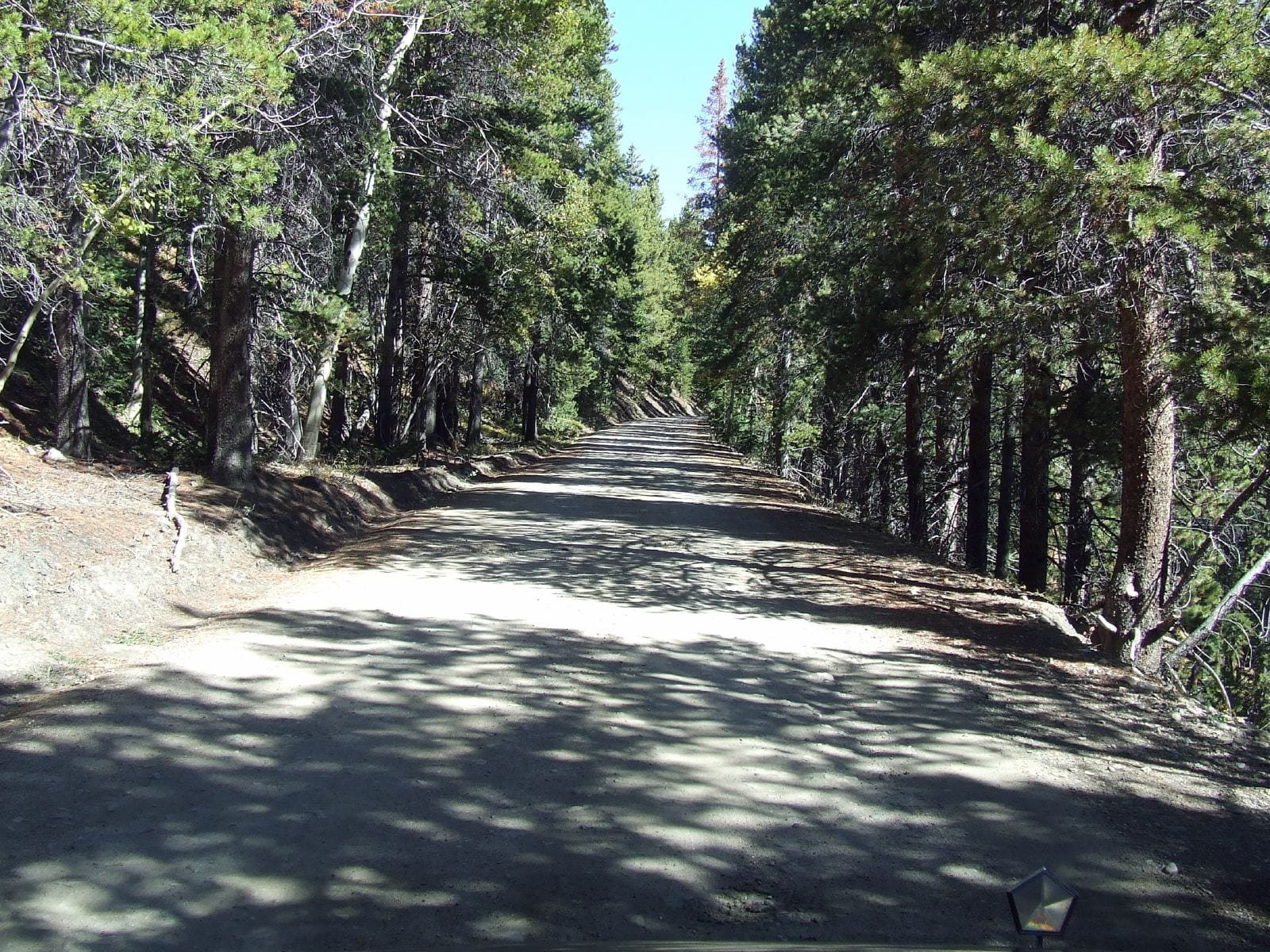
Here are some of the notable events from Colorado’s railroad history, in chronological order:
1859 – Gold discoveries bring settlements and drive demand for rail service
If you lived on America’s East Coast in the late 1850s, trains were something you were most likely already intimately familiar with. But along Colorado’s sparsely populated pre-territory front range, there wasn’t a need for railroads. That quickly changed when news began to spread that gold was found near the area that would later become the capital city of Denver.

Mining settlements began popping up along the South Platte River and a call for rail service to the area immediately followed. In 1859, the explosive news of the impressive finds discovered during the Pikes Peak Gold Rush intensified calls for rail service to be installed in the region, but there was a massive problem: Colorado’s terrain.
At the time, the thought of installing rail service through the area’s steep mountain landscape presented an issue that mountaineer and lecturer Robert Ormes called a “geographical irony.”
Valuable minerals like gold and silver were there for the taking, but tall peaks and steep canyons made bringing railroads through the Rocky Mountains seemingly impossible. Many efforts to connect rail service from the Kansas Territory to the Pacific coast were launched only to fail a short time later for this reason.
1862 – Congress passes the Pacific Railway Act and rail service to Denver follows (eventually)
The US Congress responded to the many urgent calls to bring rail service to the burgeoning newly established community of Denver in 1862, but Colorado Territory wouldn’t get its first railroad until 1867 when an 8.9-mile line was established that reached into the town of Julesburg in northeast Colorado by the Nebraska border.
A year later, rail was built to deliver coal from mines in southwestern Weld County near Erie, Colorado to other railroad networks.
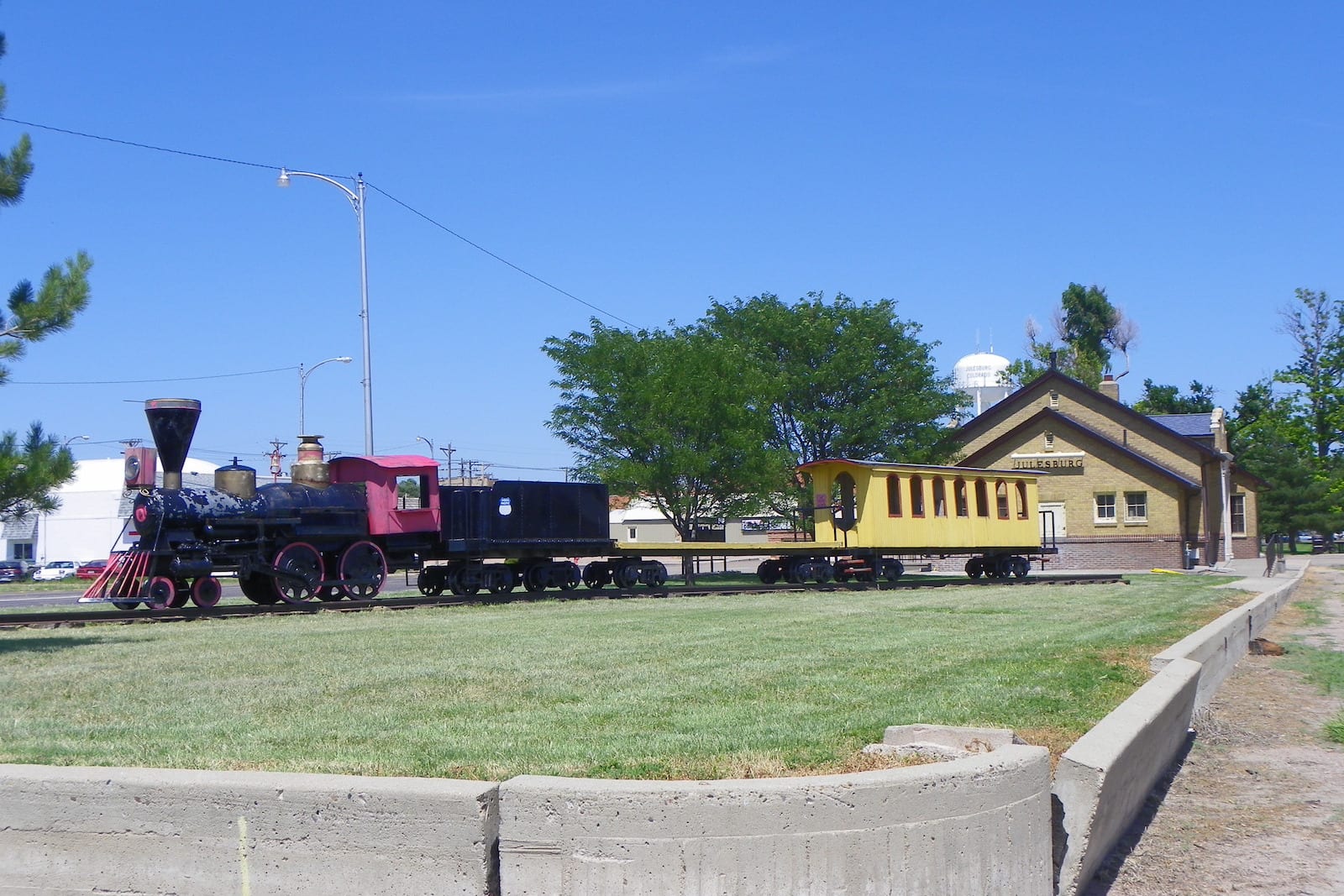
While the Pacific Railway Act of 1862 originally intended to connect Denver, a lack of funds prevented that from happening. Colorado’s Territorial Governor John Evans embodied the collective sentiment of the time, declaring that
Colorado without railroads is comparatively worthless.
Frustrated business owners in the community responded by bringing rail service to Denver on their own by building a line north to the city of Cheyenne through the launch of the Denver Pacific Railway and Telegraph Company. To achieve this, the company purchased government-owned land designated for rail routes.
The track became the first major railroad to serve the Colorado Territory. The Denver Pacific Railroad was completed on June 26, 1870.
1872 – The Colorado Central line connects to Colorado’s gold mines for the first time with narrow gauge rail technology
The first railroad to connect Colorado’s high-elevation gold mines was built in 1872 with a track that connected Golden to Black Hawk through steep canyon walls that were carved out by the waters of Clear Creek long ago. To achieve this remarkable feat, a narrow gauge rail was installed, which featured a narrower track gauge than conventional tracks.
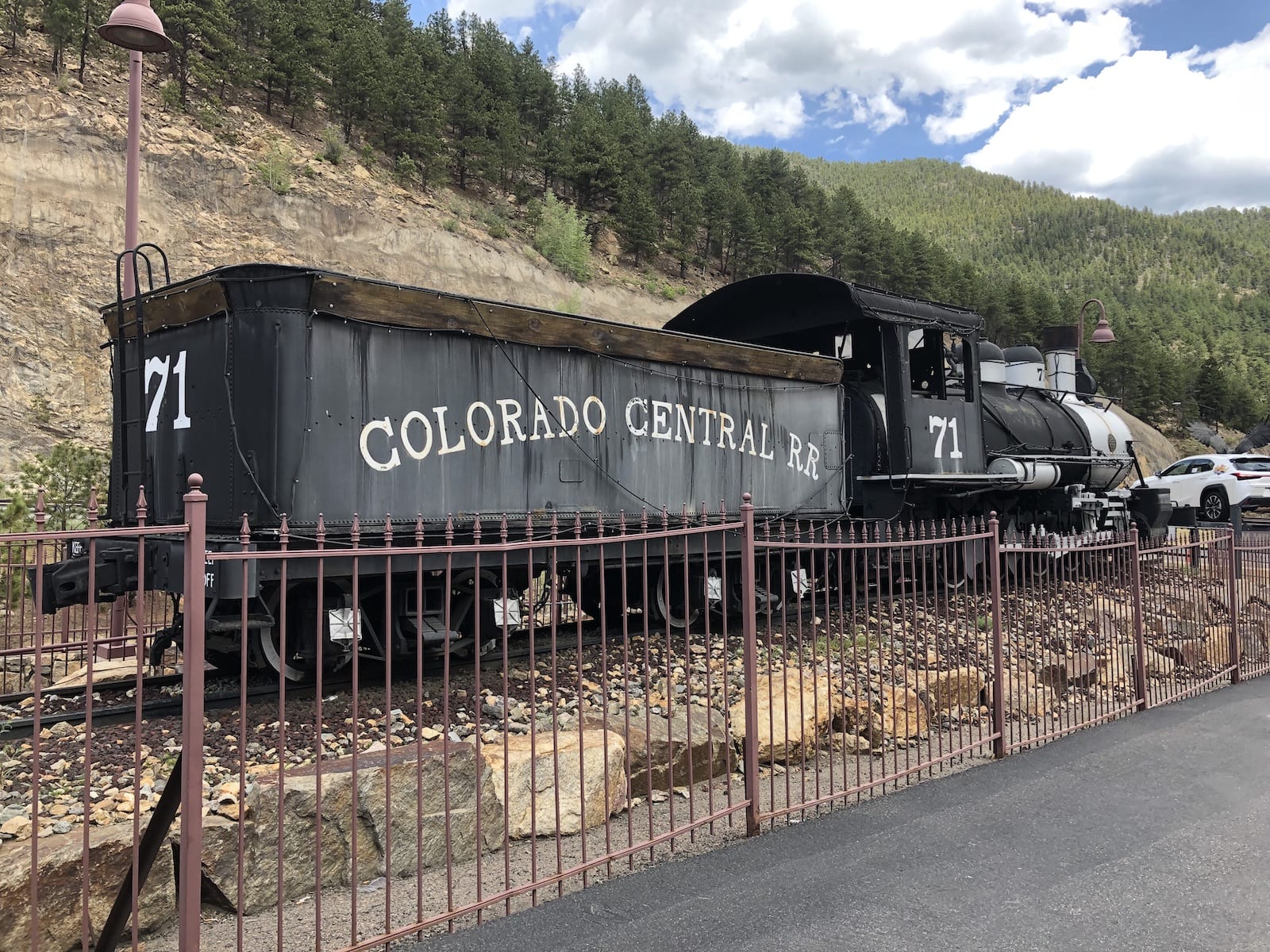
Designed to scale mountainous terrain and slink through tight curves, the technology was essential for exporting resources out of Colorado and bringing goods, tourists, and throngs of new residents into the territory’s booming mining communities.
While it would take six years for the line to reach just three miles further into Central City, many more miles of track were laid in 1873 throughout the Boulder Valley to connect communities there.
The same year that Golden and Black Hawk were connected by rail, the Denver, South Park, and Pacific Railroad Company was formed to connect Denver with mines deep in the mountains. Their proposed rail service planned to reach over the Continental Divide, through South Park, down into the San Juan Mining District, and beyond.
Over decades, the company established lines that reached the town of Morrison in Colorado’s foothills, then to Bailey parallel to Highway 285, over Kenosha Pass, and eventually into Gunnison and beyond. The railroad company changed hands and eventually shut down, but at its peak, the line spanned 335 miles and was the longest narrow gauge railroad in Colorado.
1880-1890 – Railroad construction booms and growth in Colorado explodes along with it

From 1880 to 1883, more railroad track was added in Colorado than were built there during the previous 13 years. By 1890, Colorado had racked up three times as much railroad mileage than it had just a decade before. A
s railroads rapidly proliferated in the state during the decade, Colorado grew along with them by adding four times as many farms and six times the amount of investment in local manufacturing throughout the 1880s.
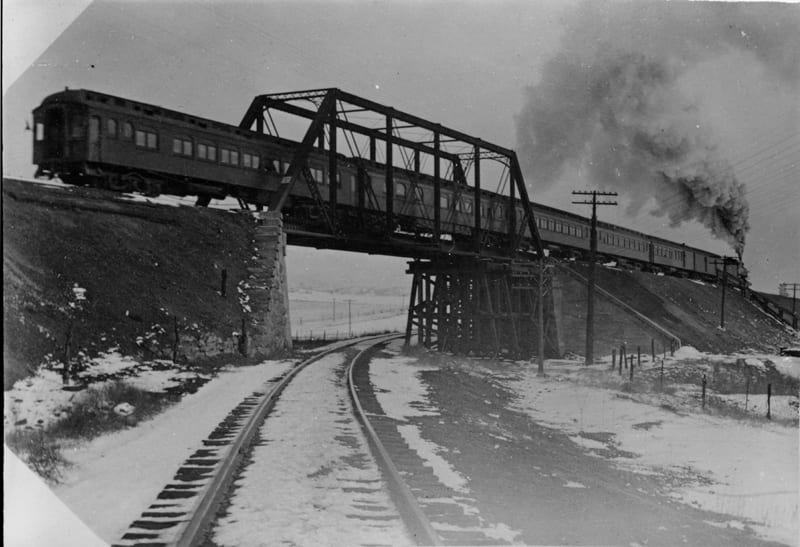
For the decade, census data shows the state’s population exploding from 194,327 to 413,249. The Denver & Rio Grande Railroad company is recorded as being the most active railroad company in the state during this period, but their ambitions attracted competitors that raced to connect every corner of the newly established state via railway.
Driven mostly by gold and silver mining, the flurry of railroad activity resulted in new rail lines being established over and through the Continental Divide, across each state border, and increasingly with routes designed to connect Colorado’s smaller communities.

After silver was discovered in the small and fledgling town of Aspen, a rail service was established in the area in 1887, which brought money, workers, and new life to the community. Formerly remote towns like Gunnison, Creede, Leadville, Durango, and Silverton were connected by rail by the end of the decade, and newly added routes through Texas to the Gulf of Mexico opened up the state to the ocean.
1893-1910 – A severe economic depression strikes before the height of Colorado’s railroad expansion
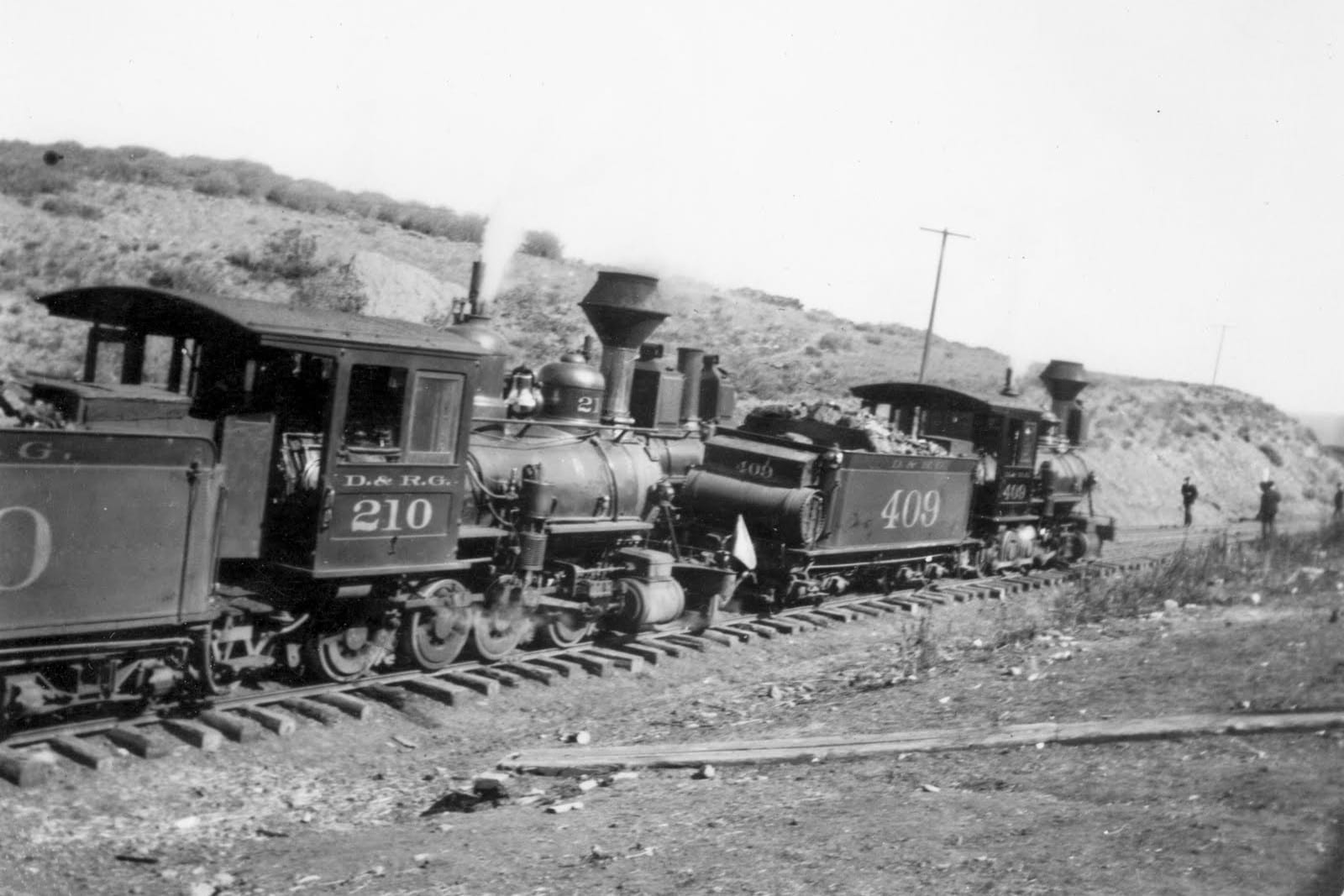
Colorado’s railroads were and are intrinsically linked to its mining industry. So when the Sherman Silver Purchase Act was repealed in 1893 by President Grover Cleveland, the state’s booming railroad expansion suffered along with its mines, a crucial source of employment and wealth in Colorado. Rail companies like the Rio Grande and the Rio Grande Western were hit especially hard by the economic downturn because they heavily relied on transporting silver.
Many rail service companies survived this period by pivoting to haul other minerals, but Colorado mining communities such as Leadville and Creede greatly suffered. As the state began to recover, railroads continued their rapid expansion financed in large part by transporting gold, coal, lumber, and an increasing number of tourists intent on taking in the American West.

Shortly before the Silver Crash, just 1,570 miles of rail covered the state. By 1910, that number skyrocketed to 5,532 miles. Rail expansion continued to help precipitate a massive growth of Colorado’s population during this period as well. From 1890 to 1910, it nearly doubled from just over 400,000 residents to nearly 800,000.

Railroads are still a significant part of the state’s modern industries and culture, but most Coloradans don’t need, see, or appreciate them in the ways that early residents did. Today, city traffic and planes flying overhead feel like permanent fixtures in Colorado, but the state’s fascinating railroad legacy proves just how much daily life can change over time.

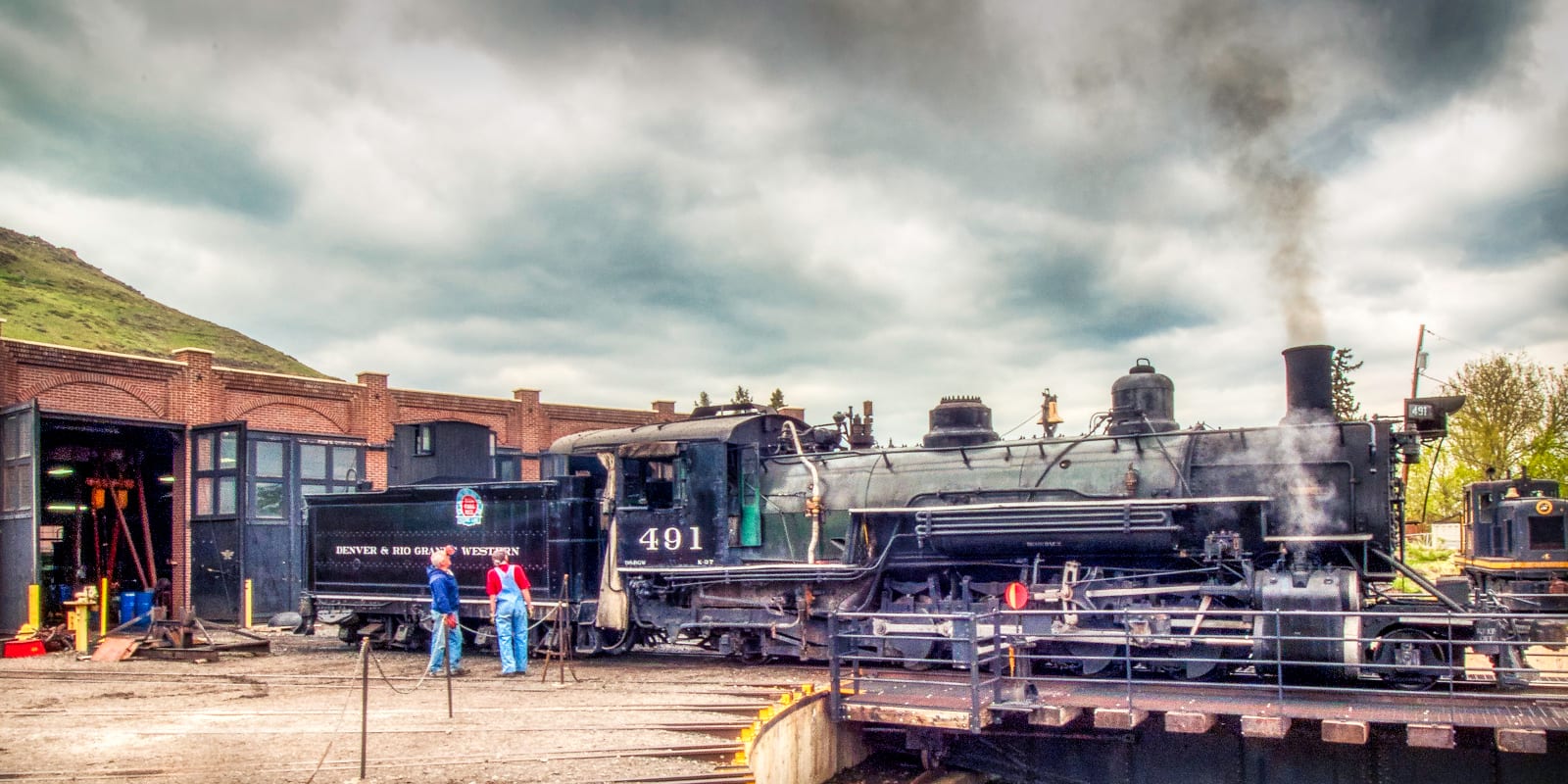
 Rundown of 32 Ski Resorts in Colorado
Rundown of 32 Ski Resorts in Colorado